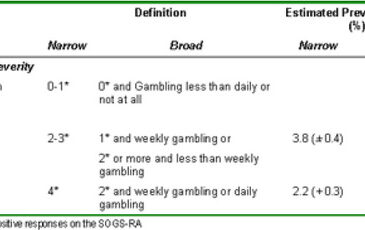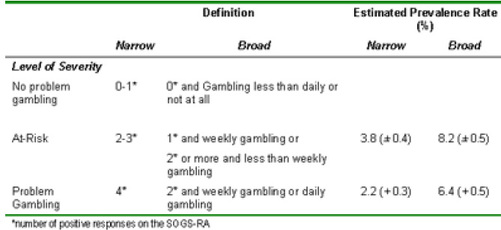In scientific research, much of what we observe is a function of how we define it. Years ago, Burke fashioned an outstanding television series and a book (Burke, 1985) on this very concept. In his book, Burke noted the following:
"When we observe nature we see what we want to see, according to what we believe we know about it at the time. Nature is disordered, powerful and chaotic, and through fear of the chaos we impose system on it. We abhor complexity, and seek to simplify things whenever we can by whatever means we have at hand. We need to have an overall explanation of what the universe is and how it functions. In order to achieve this overall view we develop explanatory theories which will give structure to natural phenomena: we classify nature into a coherent system which appears to do what we say it does … All communities in all places at all times manifest their own view of reality in what they do. The entire culture reflects the contemporary model of reality. We are what we know. And when the body of knowledge changes, so do we" (p.11). "Like every other fact that underpins our relationship with the technology structuring our lives, we trust it. We are trained to accept the facts of science and technology no matter how frequently the same science and technology renders them obsolete. Yet the concept of the generally accepted ‘fact’ is a relatively new one. It came into existence only five hundred years ago as a result of an event that radically altered Western life because it made possible the standardisation of opinion" (Burke, 1985, p. 91).
Our understanding of gambling and related problems reflects Burke’s observations about nature. For example, the National Gambling Impact Study Commission (National Gambling Impact Study Commission, 1999) and the National Research Council (National Research Council, 1999) noted the importance of improving our understanding about the prevalence of gambling disorders, the risk factors that influence this rate and the methods used to generate such estimates. Both groups emphasized the importance of these issues with regard to our understanding of young people and their relationship to gambling.
Burke’s observations encourage us to ask about the validity of scientific evidence. Two recent issues of the WAGER [5(33), 5(34)] touched on the matter of validity as it relates to prevalence research. Validity is an index of whether an instrument measures what it purports to measure for the context and objectives associated with its use. Two new studies bear directly on the issue of prevalence among young people as well as the validity of these estimates. Ladouceur and his associates asked whether the SOGS in particular provides an accurate measure of pathological gambling among children, adolescents and adults (Lacouceur et al., 2000). In this clever study, Ladouceur et al. examined one potential influence that can compromise validity: do respondents fully understand the meaning of the screening items. If they do not understand the items and then have them clarified, will this lead to changes in the score of the item?
Conducting three separate studies with children, adolescents and adults, Ladouceur et al. hypothesized that respondents would not understand all of the items on the SOGS, that problem gamblers would misunderstand the items more than non-problem gamblers, and that clarification of the items would lead to scoring changes that decrease the number of identified problem gamblers.
The findings provided support for the notion that respondents would misunderstand items and that, once clarified, they would change their responses to decrease the prevalence of pathological gambling. However, only grade school children provided evidence that problem gamblers would misunderstand more items than non-problem gamblers.
Although this study is very important, the finding that our SOGS-based prevalence estimates are inflated may be compromised by "demand characteristics" that implicitly encouraged participants to change their responses. In addition, since the study employed repeated measures, it also is possible that participants simply reviewed and reconsidered their responses during the interim. If this is true, then the construct of problem gambling may not be as stable as once thought. Consequently, these results are not conclusive, but do suggest the importance of critically assessing the integrity of experimental procedures and the validity of the associated data.
In another study that focused on young people, Poulin estimated the prevalence of gambling problems among adolescent students in the Atlantic provinces of Canada. This study also bears on validity issues since it compares a broad definition of gambling problems with a narrow definition.
Poulin compared narrow and broad definitions of at-risk and problem gambling (Poulin, 2000). Table 1 summarizes the "narrow" and "broad" operational definitions and provides the overall prevalence rates obtained when each definition was applied to the Atlantic province sample data.
Taken together, these studies are very important. They signal a new era of gambling research where facts are not simply established. In these studies, during the process of generating facts, the authors critically evaluate and test the validity and integrity of their methods and the evidence. This development reflects the emergence of a more mature science in gambling studies. Ladouceur et al. (2000) remind us that validity is not fixed with a single instrument and the integrity of data may not be as straightforward as it seems. Poulin (2000) reminds us that how we define a problem determines its magnitude and that prevalence estimates are relative phenomena. These studies also provide a clarion call to investigators and public policy makers alike that facts are fragile and truth is in the details.
References
Burke, J. (1985). The day the universe changed. Boston: Little, Brown and Company.
Lacouceur, R., Bouchard, C., Rheaume, N., Jacques, C., Ferland, F., Leblond, J., & Walker, M. (2000). Is the SOGS an accurate measure of pathological gambling among children, adolescents and adults? Journal of Gambling Studies, 16(1), 1-24.
National Gambling Impact Study Commission. (1999). National Gambling Impact Study Commission Report. Washington, D.C.: National Gambling Impact Study Commission.
National Research Council. (1999). Pathological gambling: a critical review. Washington D.C.: National Academy Press.
Poulin, C. (2000). Problem gambling among adolescent students in the Atlantic provinces of Canada. Journal of Gambling Studies, 16(1), 53-78.





